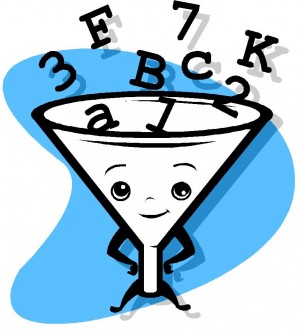Studies show only a small percentage of CAD features are used by engineers. There are simple ways to increase the value of a CAD investment.
[Editor’s Note: This article originally appeared on the blog “Reinventing Design,” published by PTC.]
By Barb Schmitz
Organizations spend significant amounts of money on their mechanical CAD systems, both in software licensing fees and hardware as well as on the training and support that are essential to ensuring maximum productivity. In fact proper and continual training is key to ensuring that engineers are making full use of all the available functionality—often buried behind buttons, pull-downs, and configuration files—offered in today’s MCAD systems.

Though the benefits of 3D MCAD software have been well established, estimates show that in general only a small percentage of the overall functionality offered by these systems are being used. Software vendors continuously update their software, packing them with loads of new enhancements and features, some of which are targeted at niche markets.
With all manufacturers in a constant race to develop and deliver more innovative products to their customers faster than their competitors, they often don’t have the time to allocate to learning how to best take advantage of new functionality that could help them get their jobs done faster and better than before.
Let’s take a look at some ways that organizations can better leverage the value of their MCAD investments.
Enlist an expert—MCAD software has been around for 30 years, so there are seasoned experts walking around with years of best practices and lessons learned under their belts. With tens of thousands of hours of experience with multiple generations of MCAD software, these experts can be invaluable to help organizations with initial configurations of MCAD systems.
Enlist one of these CAD veterans, at the cost of one or two days of consulting fees, to help others on the design team to leverage all that hidden functionality, establish automated design standards, match the interface to your specific needs, and set up other tools that can significantly cut down on design time. They can also share start parts, formats, templates, and libraries. The benefits can be up to a 50% decrease in design time, better utilization of your CAD software, and a higher level of confidence among your engineers.
Set the standard—Documenting standards and best practices is one of the most valuable ways in which designers and engineers can get future products to market faster. As design team uses specific MCAD software, they will continuously learn better ways of doing things that will help them get products to market faster. That process of learning and discovering newer and better ways to design products costs organizations time and money.
So why not enforce the establishment of a set of design standards that contain these jewels of knowledge and lessons learned? This ever-evolving document should include information about drawing formats, bill of materials, printing standards, rules and configuration files, best practices for modeling of 3D parts and assemblies, file management, and design rules. Update it monthly and make it available to everyone on the design team.
Be a continuous learner—Though engineering managers have enough to worry about just keeping design projects on schedule, maintaining a consistent training program should remain a priority. That means committing money in the budget to provide each engineer with three or more days of training each year. Most VARs offer regularly scheduled classes for every level of user so individual users can attend classes as their schedules permit, decreasing downtime.
This might seem like an unnecessary expense, but often experienced designers use design tools and techniques based on how they were trained to do them ten or more years ago, many of which have been replaced by more efficient ways. This can lead to wasted time and effort so when you look at the cost of lost days, weeks and months of lost efficiency, it becomes easier to justify the expense a few days of training per year.

Stay on top of new functionality—Every new release of MCAD software offers users the option of adding on or upgrading to new functionality not offered in the base package. One or two of these new features or functions could result in significant decreases in your development time, making it worth your while to appoint one engineer to stay abreast of what is available in the higher end CAD packages.
They can do so by browsing web pages, YouTube videos, or product data sheets, sitting in on webinars, or asking your VAR to find out what new functionality might benefit your company’s design process. Before investing in these upgrades or add-ons, consider taking a class that covers the advanced functionality and try out a limited time trial version —offered by many VARs to those attending the training—to see if there is value in this new functionality for your company.





